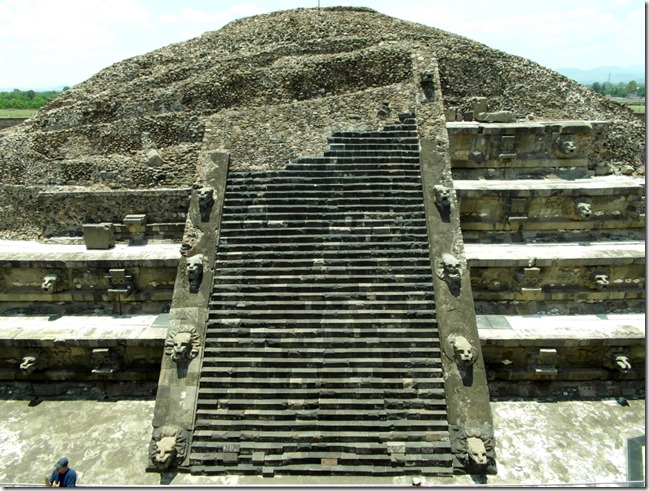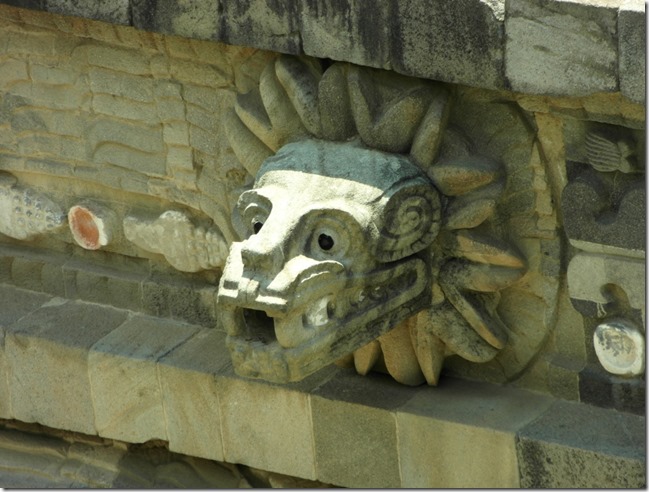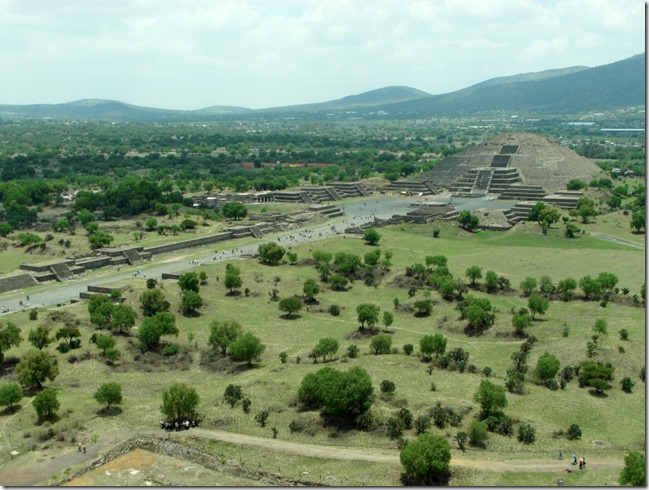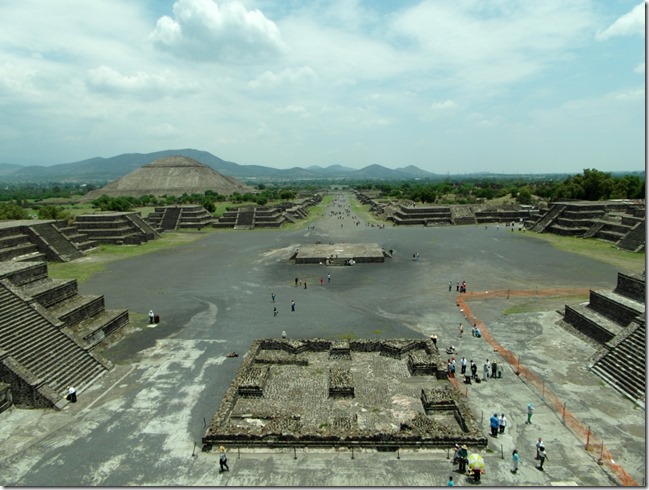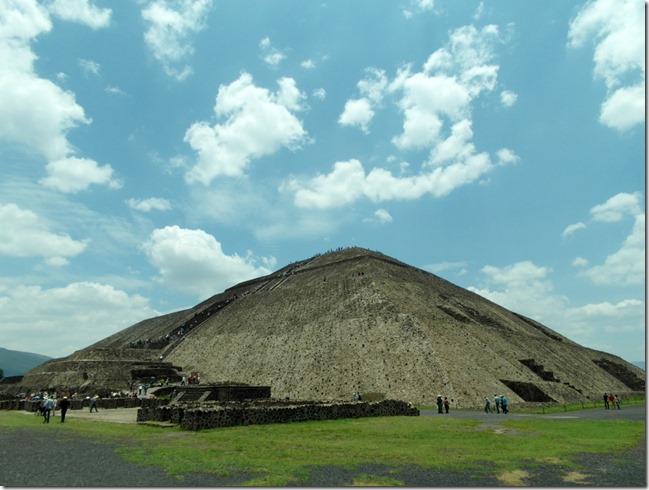Its not often that one gets to visit Mexico City so although the “Aztec” ruins of Teotihuacan are nearly 2 hours out of the city we felt that our investigation of the various different Indian ruins would not be complete without the inclusion of this great and impressive site, and Teotihuacan proved to be just that.
We had a great guide that picked us up in the morning and walked us around the site for a few hours explaining the history and how it was discovered. Turns out that in 1905 a few railway workers that were constructing a railroad between Mexico city and a neighbouring town to the north were walking along during a heavy rainstorm when the vegetation on the one side of the pyramid of the sun came sliding off it and hence the discovery, otherwise, the ongoing belief that these were just small “koppies” could possibly have continued to this day.
Pyramid of the moon taken from the top of the Pyramid of the Sun.
Although it is commonly considered an Aztec site, it is thought rather that the the Aztecs may only have been influenced by this city and who were/are indigenous to this area. The Aztecs were considered the most powerful of the tribes in their day as they were a warring and fierce bunch however, they were only around for a short time between 1300 and 1500AD (long after the zenith of this city) and until the Spaniards arrived with long sticks that shot fire and that kind of created the idea that you shouldn’t take a knife to a gun fight!!
Wikipedia..“The city is thought to have been established around 100 BC and continued to be built until about 250 AD. The city may have lasted until sometime between the 7th and 8th centuries AD. At its zenith, perhaps in the first half of the 1st millennium AD, Teotihuacan was the largest city in the pre-Columbian Americas, with a population of perhaps 125,000 or more, placing it among the largest cities of the world in this period. Teotihuacan began as a new religious centre in the Mexican Highland around the first century AD. This city came to be the largest and most populated centre in the New World. Teotihuacan was even home to multi-floor apartment compounds built to accommodate this large population. The civilization and cultural complex associated with the site is also referred to as Teotihuacan or Teotihuacano. Although it is a subject of debate whether Teotihuacan was the centre of a state empire, its influence throughout Mesoamerica is well documented; evidence of Teotihuacano presence can be seen at numerous sites in Veracruz and the Maya region. The builders of Teotihuacan took advantage of the geography in the Basin of Mexico. From the swampy ground, they constructed raised beds, called chinampas. This allowed for the formation of channels, and subsequently canoe traffic to transport food from farms around the city. The earliest buildings at Teotihuacan date to about 200 BC. The largest pyramid, the Pyramid of the Sun, was completed by 100 AD.”
The site otherwise is VAST and only a quarter of it has been retrieved from the vegetation to date and its estimated that it will require at least another 50 years before the entire site has been cleaned of the covering vegetation.
The Plaza with the Pyramid of the Sun in the distance…
The pyramids of the sun and the moon which are the celestial main points of the site are huge and the pyramid of the Sun particularly is not that much smaller than the pyramid of Giza. The site took a few exhausting hours to get around and climb to the top of, which is unique in that most of these historical pyramids just about anywhere in the world these days cannot be climbed for the sake of preservation.
Pyramid of the Sun with crowds walking to the top…




